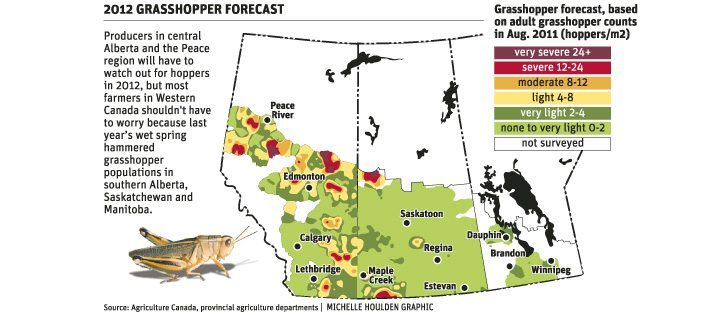EDMONTON — China likes Canadian wheat, a lot.
Sean Linstead is in a good position to comment on what China wants when it comes to wheat.
As a Vancouver-based trader for of COFCO, the China National Cereals, Oils and Foodstuffs Corp., he sources wheat for the giant state buyer. And premium hard red spring wheat from Canada remains a desired product, he said.
China is the world’s second largest wheat producer after the European Union, but it is still short of quality wheat.
“It is an opportunity for Canada. China doesn’t have the right varieties of wheat with the protein and quality characteristics that it needs. It has to import them,” he told producers and industry members at the Farm Tech event in Edmonton last week.
Read Also

Feds propose overhaul of chronic wasting disease control program
Chronic Wasting disease control program getting updated by Canadian Food Inspection Agency with feedback encouraged from producers.
After the Canadian Wheat Board closed operations, COFCO opened a Canadian office to source the wheat it needed to blend with its own.
“Canada is known for its very high quality and clean product and that is very important to the Chinese millers,” he said.
As it competes with American dark northern spring (DNS) and other spring varieties, Canada can call on its historical reputation.
“The CWB is lasting memory. They were very happy with that relationship and the reliability of that product,” said Linstead.
While the Chinese source a lot of wheat from Black Sea suppliers, the quality is often lower.
“They are looking for strong gluten, high protein, good water absorption, quality and consistency,” he said.
This year has proved a challenge for Canadian producers as vomitoxin levels have been higher than average. The Chinese market requires it to be one part per million or less; ergot to be 0.01 percent or less, and glyphosate to be five parts per million or less.
The country imported about $1.2 billion of grades one and two wheat from Canada since 2008.
About half of Chinese wheat imports are made up from Canadian western red spring, American DNS or the Australian prime hard classes.
Jim Smolik of Cargill said the demand exists in China, but there are competitors and that keeps a lid on prices.
“Russian production of grains has grown 70 percent in the last decade and they plan to grow that by 40 percent again, to 140 million metric tonnes,” he said.
While they are known for lower quality grain, that might not always be the case.
COFCO expects Canada will expand its share of total China’s wheat imports of three million tonnes, to one million tonnes by 2025 from 500,000 in 2017. At the same time, Australia is predicted to supply about 1.5 million tonnes to the Chinese.
China imported 1.75 million tonnes from Australia last year, 1.24 tonnes from the U.S. and 289,000 tonnes from Kazahkstan.
In the 2015-16 crop year, Canada exported about 16 million tonnes of wheat, not including durum, with China getting about 850,000 tonnes.
Cam Dahl of Cereals Canada said former Soviet states provide tough and the Canadian industry must produce premium products to maintain and boost its market share.
Linstead said China’s population continues a steady rise, with nearly 18 million births in 2016, the highest since 1993.
“That is an expanding market,” he said.















